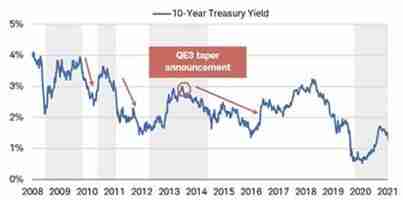Matt Bacon April 22, 2021
A big announcement came yesterday about regarding the new Biden tax increase. During a scheduled press conference, White House Press Secretary Jen Psaki announced that President Biden will propose raising taxes on the wealthy next week. The tax increases will be used to fund nearly $1 trillion in investments for childcare, universal pre-kindergarten education, and paid leave for workers.
What’s in the Proposal?
The announcement doesn’t come as a complete shock. President Biden campaigned with a raft of proposed tax increases. In fact, we wrote about some of these changes more than a month ago. Nevertheless, the proposal will call for increasing the top marginal income tax rate from 37% to 39.6%. This will match the top rate as it stood under the Obama administration.
What’s new will be a near doubling of the capital gains tax rate. The new bracket will jump from 20% to 39.6% for people earning more than $1m per year. Its not yet clear if this is threshold is for individuals or married couples. No changes will be made to the Net Investment Income Tax as we currently understand it. This tacks on an extra 3.8% for earners making more than $200,000/year ($250,000/year if married). This effectively creates five tiers of capital gains rates: 0%, 15%, 18.8%, 23.8%, and 43.4%.
What To Do
The changes will impact capital gains and qualified dividends (which get the same tax treatment as capital assets) in taxable accounts. Real estate may also undergo some significant shifts. Splitting asset sales between tax years, changing the character of income, and deferring income are the low-hanging fruit. Certain charitable strategies may also see new life.
Splitting Tax Years
Large asset sales are more likely to be split between tax years. This is already a common strategy for small businesses worth a few million dollars, but this tactic may make its way into luxury home sales too. Homeowners currently receive a $250,000 capital gains exclusion on the sale of a home they have lived in for at least two of the last five years (double to $500,000 if married). But homes in the DC-Metro area routinely sell for $1.5m or more. Cash installment sales spanning several years may become commonplace. New types of mortgages that facilitate a purchase across multiple years may also emerge.
Change the Character of Income
High earners may want to rethink their taxable accounts. Municipal bonds aren’t taxed at a Federal level or a state level if held by a resident of that state. Transitioning from growth stocks and dividend paying equities to municipal bonds may make sense for some earners in the $1m+ bracket. Alternative investments may also look more appealing. Some of these generate large deductions in the current tax year. Others are categorized as a partnerships and generate ordinary income as opposed to capital gains. Ordinary income is not subject to the net investment income surtax, which can save top earners at least 3.8%.
Defer Income
Higher earners can also kick the can down the road and opt to hang on to securities with embedded gains. This has its own drawbacks though. Holding equities seemingly indefinitely will incrementally increase portfolio risk due to a lack of rebalancing. Still, this may be the lesser of two evils for some – particularly those who are close to retirement and likely to be in a lower bracket in the next few years.
Small business owners can also implement defined benefit pension plans. These plans offer dollar-for-dollar deductions and can accommodate large contributions that sometimes tally in the hundreds of thousands. These plans require contributions for all employees in addition to the business owner, which can make them a non-starter for some organizations. Law firms, medical and accounting practices, and other professional services firms are all prime candidates.
Deferred compensation plans are another great option for reducing income and staying below the $1m income mark. There are no limits to what you can contribute but your contributions are subject to the claims of creditors if the company goes belly up. Buyer beware.
Give it Away
Charitable strategies will also get more attractive. Charitable lead trusts, charitable remainder trusts, and outright gifts to charity are all great ways to reduce income. There are limits to how much credit you can receive in any given year and the rules around donations can get complicated, so check with your tax advisor to craft a giving plan that maximizes the benefits received by you and your charity of choice.
Trouble areas
We foresee a few potential trouble areas with the proposed Biden tax increase. Elder care may get more complicated. For example, say grandpa passes away leaving behind his 85-year-old spouse with dementia. Moving grandma into a care facility may require selling her primary residence to pay for care. Her late husband’s $250,000 capital gains exclusion on the sale of the home will disappear after his passing. The tax bite could be significant following the proposed changes if the home has considerable appreciation.
Stock options may also get less appealing, though probably not by much. Start ups with massive growth potential will still have these as a valuable recruiting tool. But if you’re looking to join an established company with an already dominant market position and more moderate growth prospects, arguing for greater base pay that can be funneled to a deferred compensation plan may be the smarter play.
Final Thoughts
This is still a proposal and only a proposal. Passage of the Biden tax increase is sure to face opposition and this is not a done deal. This is a time for planning, not action. Talk to your tax advisor. Talk to your financial planner. Craft a strategy for a law that may come about and relax. You’ll be ready to go if and when the time comes.











